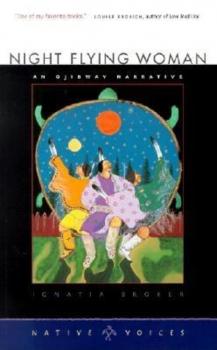ТОП просматриваемых книг сайта:
Биографии и Мемуары
Различные книги в жанре Биографии и Мемуары, доступные для чтения и скачиванияАннотация
The story of Albert Alonzo "Doc" Ames is perhaps the greatest political scandal in Minnesota history. As mayor of Minneapolis, Ames exposed the city to national humiliation–and helped jump-start an era of reform. <br/> <br/> At the turn of the twentieth century, Minneapolis was moving away from a time of political rings, frontier justice, and old boys' clubs to a more civic-minded way of governing. But in 1901, the affable, degenerate Doc Ames, a former Minneapolis mayor well past his political prime, duped his way back into the office. Ames appointed his brother as chief of police, and together they assembled a rogues' gallery of thieves to squeeze as much money out of the city as quickly as they could. Under Ames's leadership, criminals walked beats wearing policeman’s uniforms. City detectives robbed prominent citizens. Police maintained arrangements with madams and saloonkeepers, extracting pay for the privilege of openly ignoring the law. <br/> <br/>With a card game gone bad, and a complaint to a newspaper, it all fell apart. Ames fled Minneapolis in mid-term to avoid prosecution. And at Doc Ames's spectacular downfall, the citizens of Minneapolis finally woke up and took their city back.
Аннотация
What goes through your mind when you’re dropped alone in the middle of the Alaska Range, the cold and darkness surrounding you without another human being for miles? Arctic explorer Lonnie Dupre had made a career out of working in teams to survive in extreme conditions and places most humans wouldn't dare to tread. But shortly after Dupre found himself alone after a twenty-year marriage, he decided he needed to summit Denali, the continent’s tallest mountain, alone and in the harshest possible conditions to prove something to himself. <br/> <br/> Dupre was on his fourth attempt in five years in late December 2014 when a surprise storm caught him at 11,200 feet. Forced to live for almost five full days with only a day and a half's worth of food and water, Dupre was in the most dangerous situation of his life. <br/> <br/> <em>Alone at the Top</em> offers a mountaineer’s firsthand perspective during life-and-death decision making on the mountain. Dupre takes readers along with him as he struggles to keep his mind and body in shape while facing incredible hardships. He applies the lessons learned on the mountain to everyday life.
Аннотация
With the art of a practiced storyteller, Ignatia Broker recounts the life of her great-great-grandmother, Night Flying Woman, who was born in the mid-19th century and lived during a chaotic time of enormous change, uprootings, and loss for the Minnesota Ojibway. But this story also tells of her people's great strength and continuity.
Аннотация
The world turned upside down for city-bred Marjorie Douglas when, in 1943, her young husband moved her and their baby, Anne, from suburban St. Paul to a western Minnesota stock ranch to help his parents stave off financial disaster. With wit and wisdom Douglas's memoir describes a Midwestern way of life of 50 years ago.
Информация о книге
Автор произведения Marjorie Myers Douglas
Жанр Биографии и Мемуары
Серия Midwest Reflections
Аннотация
In the years after the Second World War, a young doctor took up his post in one of the most remote regions of northern Minnesota. His term of service turned into a lifetime of caring for the people who made this isolated and often lonely place their home. The story of this remarkable adventure in frontline medicine forms the heart of this wonderful book.<br /><br />For almost four decades, Roger MacDonald was the country doctor who tended to those in need in an area larger than the states of Delaware and Rhode Island combined. Because he was the only doctor for miles, MacDonald traveled to the small towns and remote fishing villages, the logging camps and Indian reservation, the one-room schools and the remote backwoods cabins to practice his craft. In the course of his work, he encountered a remarkable group of tough, independent, and idiosyncratic individuals—all of whom relied on him for medical help. In turn, they taught MacDonald the importance of patience, human strength, wisdom, humor, and simple grace.<br /><br />MacDonald came to know the people he cared for in extraordinarily intimate ways. Treating more than just the body, MacDonald became a confidant, advisor, caretaker, and friend as he plied the back roads of the north woods.<br /><br />As a storyteller, MacDonald shows us the beauty of this remote region and the charm of those who make their lives there. With respect, affection, and humility, MacDonald relates his experiences with those who placed their well-being in his hands. The result is a warm and warm-hearted tale of the life of a north country doctor.<br /><br />Praise for A Country Doctor's Casebook<br /><br />"This pioneer physician's account of medicine, life, and death in the north of northern Minnesota is suffused by humanitarian warmth and humor. We all are there: Native Americans and immigrants, our lives beset by accidents and illness, and above all the love and dedication making us who we are, helped by our own Galen. A great read." — Robert Treuer, author of The Tree Farm: Replanting a Life<br /><br />"A delight—wonderfully written with a wry sense of humor. These stories ring true: compassionate, gentle, loving portraits of people for whom Dr. MacDonald cared deeply." — David Hilfiker, M.D., author of Healing the Wounds: A Physician Looks at His Work<br /><br />"Beautiful, humorous, and lucidly written, this is a heartwarming and sometimes heartbreaking treasure of American rural medical history." — Pierre Delattre, author of Woman on the Cross, Episodes, and Tales of a Dalai Lama
Информация о книге
Автор произведения Roger A. MacDonald, M.D.
Жанр Биографии и Мемуары
Серия Midwest Reflections
Аннотация
This sequel to Garland's acclaimed autobiography, A Son of the Middle Border, continues his story as he sets out for Chicago and settles into a Bohemian encampment of artists and writers. There he meets Zulime Taft, an artist who captures his heart and eventually becomes his wife. The intensity of this romance is rivaled only by Garland's struggle between America's coastal elite and his heartland roots. A Daughter of the Middle Border won the Pulitzer Prize in 1922, forever securing his place in the literary canon.
Аннотация
A classic of American realism, A Son of the Middle Border (1917) is the true coming-of-age odyssey of a farm boy who—informed by the full brute force of a homesteaders' life on the vast unbroken prairie—would become a preeminent American writer of the early twentieth century. Pulitzer Prize winner Hamlin Garland's captivating autobiography recounts his journey from a rural childhood to the study of literature and the sciences in Boston, his vital connections with such inspirations as William Dean Howell, and eventually his reclaimed sense of identity as a writer of the Midwest's beautiful yet hard land. This definitive book placed Garland among such regionalist writers as Willa Cather, Sherwood Anderson, and Theodore Dreiser.
Аннотация
"I was not prone to drastic actions. I did not rush into the unknown. After fifteen years as a more or less effective lawyer, I approached decisions with a certain caution. I not only weighed the pros and cons but also examined all likely consequences and reasonably foreseeable risks. Looking back, I wondered what could have prompted me to take those initial steps down a path that would alter the course of the rest of my life armed with only an optimistic hunch and knowledge that turning back was not an option."<br /><br />Minnesota-born lawyer Jeff and his partner, Dean, enjoyed a successful and fashionable life in London. They shopped at Harvey Nichols, walked their dogs in Kensington Gardens, and vacationed in France and Tibet. Yet, they dreamed of a new life. In January, Jeff was promoted to a coveted position at his bank; in March, he resigned. Jeff and Dean sold their house, packed the dogs, and moved to the sleepy resort town of Hayward, Wisconsin, where they acquired a nos-talgic ice cream shop and a rundown Victorian mansion.<br /><br />Scoop: Notes from a Small Ice Cream Shop is the chronicle of Jeff and Dean's first year in Hayward—how they are welcomed by a collection of colorful characters and how they are humbled by the challenges of operating both the ice cream shop and a bed and breakfast. It is also a story of Hayward and how the traditions and the stories of those who built the town helped our entrepreneurs adjust to the rhythm of life in their new home.
Аннотация
Charles Eastman (1858–1939) straddled two worlds in his life and writing. The author of Indian Boyhood was raised in the traditional Dakota (Sioux) way after the upheaval of the 1862 U.S.–Dakota War. His father later persuaded Ohiyesa to take a white name, study Christianity, and attend medical school. But when Eastman served as a government doctor during the Wounded Knee massacre, he became disillusioned about Americans' capacity to live up to their own ideals.<br /><br />While Eastman's contemporaries viewed him as "a great American and a true philosopher," Indian scholars have long dismissed Eastman's work as assimilationist. Now, for the first time, his philosophy as manifested in his writing is examined in detail. David Martínez explores Eastman's views on the U.S.–Dakota War, Dakota and Ojibwe relations, Dakota sacred history, and citizenship in the Progressive Era, claiming for him a long overdue place in America's intellectual pantheon.
Аннотация
The Norwegians, who first arrived in territorial days, created lasting farming settlements, especially in the Red River Valley. Their Lutheran churches continue to dot the landscape. But their experience was also urban, as they entered the trades and industries of the Twin Cities. Today, the Norwegian influence is evident in Minnesota art, culture, cuisine, and speech. Norwegian culture permeates the state's character and helps define Minnesota's unique social, political, and business environment.










